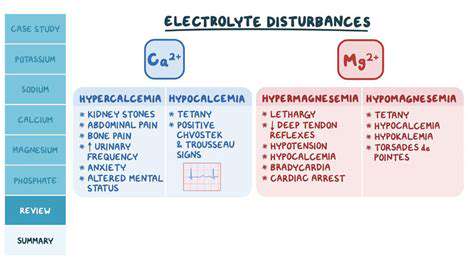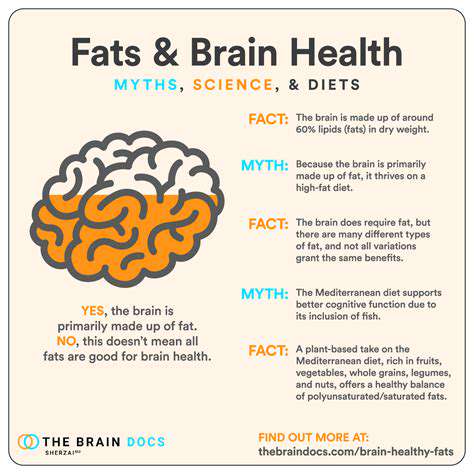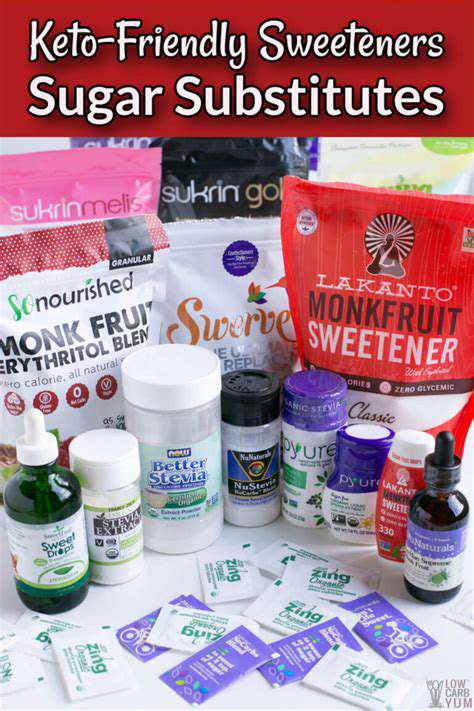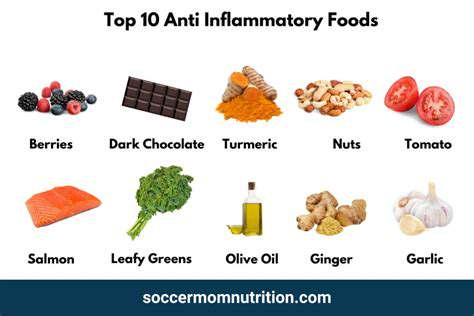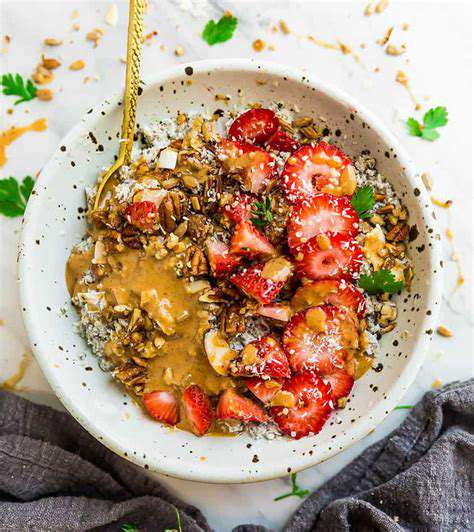Smart Shopping Tips for Healthy Eating on a Budget
Understanding Your Needs
Meal planning is more than just a list of recipes; it's a crucial step in creating a sustainable and budget-friendly healthy eating plan. Understanding your dietary needs, preferences, and any allergies or restrictions is paramount. A thoughtful assessment of your family's or individual's nutritional requirements, including protein, carbohydrates, and healthy fats, will guide your meal choices and help you avoid unnecessary food waste. Taking the time to consider these factors upfront saves money and frustration down the line by ensuring you're purchasing and preparing foods that truly benefit your body.
Consider factors like age, activity level, and any specific health conditions when creating your meal plan. If you have children, incorporate foods they enjoy while ensuring they are receiving the necessary nutrients. Also, account for any dietary restrictions or preferences, such as vegetarianism, veganism, or allergies to certain foods. By understanding your needs, you can effectively plan meals that are both nutritious and satisfying.
Crafting Your Weekly Menu
Creating a weekly meal plan is a cornerstone of effective meal planning. This involves selecting recipes that align with your dietary needs and preferences while considering your budget and available ingredients. Start by brainstorming a variety of dishes, including breakfast, lunch, dinner, and snacks. Include a mix of cuisines, flavors, and textures to keep things interesting and prevent boredom. Aim for a balance of protein-rich foods, whole grains, fruits, and vegetables to maintain optimal nutrition.
Don't be afraid to get creative and adapt recipes to your liking. Consider using leftover ingredients from previous meals to minimize waste and maximize your budget. For example, leftover roasted chicken can be transformed into salads, sandwiches, or soups. By planning your meals in advance, you can avoid impulse purchases at the grocery store and stick to your budget effectively.
Smart Shopping Strategies
Once your weekly menu is established, it's time to create a shopping list. This is where smart shopping comes into play. Review your meal plan, paying close attention to the ingredients needed for each meal. Prioritize whole, unprocessed foods, such as fruits, vegetables, lean proteins, and whole grains. These ingredients form the foundation of a healthy diet and tend to be more budget-friendly than processed alternatives.
Compare prices at different stores and look for sales and discounts. Consider buying in bulk for items you use frequently, such as rice, beans, or pasta, if it fits your storage capacity and won't result in food waste. Don't be afraid to shop at your local farmer's market for fresh, seasonal produce, often at competitive prices.
Utilizing Leftovers and Reducing Waste
Effective meal planning also involves strategies for utilizing leftovers and reducing food waste. Plan meals that allow for leftovers, which can be incorporated into lunches, salads, or other dishes. This not only saves money but also minimizes your environmental impact. Proper food storage is key to maintaining the freshness and safety of leftovers. Be mindful of portion sizes to avoid overcooking and food waste.
When preparing meals, plan for potential leftovers and prepare them thoughtfully. For example, if you're making a large batch of roasted vegetables, consider using some for a quick and healthy side dish the next day. Document what you've cooked and which ingredients you have on hand. These strategies will not only help you save money but also contribute to a more sustainable and efficient approach to healthy eating.
Read Labels Carefully and Make Informed Choices
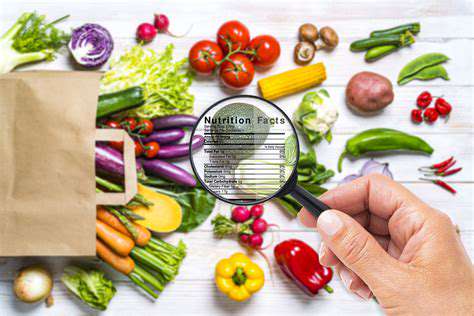
Understanding Label Information
Reading product labels carefully is crucial for making informed decisions about the products you consume or use. Labels provide vital information about ingredients, nutritional content, potential allergens, and usage instructions. This crucial information empowers consumers to choose products that align with their dietary needs, preferences, and health goals. By understanding the information provided on product labels, you can make better choices for your well-being.
Misinterpreting or overlooking label details can lead to unintended consequences. For example, a lack of attention to allergen warnings could result in severe allergic reactions. A proper understanding of the information presented on labels is essential for safe and responsible consumption.
Nutritional Content and Health Implications
Product labels often include detailed nutritional information, such as calories, fat, protein, carbohydrates, and vitamins. These details help consumers understand the nutritional value of a product, aiding in dietary planning and achieving balanced nutrition. This information is particularly important for individuals with specific dietary requirements or health conditions.
Understanding the nutritional content of products can assist in maintaining a healthy weight, managing blood sugar levels, and potentially reducing the risk of chronic diseases. Paying close attention to these details enables individuals to make informed decisions about their dietary intake.
Ingredient Transparency and Potential Allergens
Labels provide details about the ingredients used in a product. This transparency allows consumers to identify potential allergens or ingredients they may be sensitive to, enabling them to make appropriate choices. Understanding ingredient lists is particularly important for individuals with allergies or dietary restrictions.
Identifying ingredients that might cause allergic reactions, such as nuts or dairy, is a critical aspect of safe consumption. The ingredient list also helps consumers understand the composition of the product and the potential impact on their health. By carefully reviewing the ingredient list, you can identify products that match your dietary needs and preferences.
Furthermore, understanding ingredient lists can help consumers make choices that align with their values. For example, some consumers prefer products made with organic ingredients or natural preservatives. The ingredient list can be a valuable tool for navigating these preferences.
Usage Instructions and Safety Precautions
Many products include usage instructions and safety precautions on their labels. These instructions provide critical information for proper use and to avoid potential hazards. Following the instructions carefully prevents misuse and ensures that the product is used safely and effectively.
Understanding the recommended dosage, storage requirements, and potential side effects is crucial. By adhering to these instructions, consumers can maximize the benefits of the product and minimize any risks. Proper use and handling of products, as outlined in the safety precautions, are essential for safe consumption.
Thorough comprehension of the label's instructions and warnings ensures that the product is used appropriately and that potential hazards are minimized. Consumers should always prioritize safety and consult the provided instructions before using any product.
Embrace Leftovers and Repurpose Ingredients
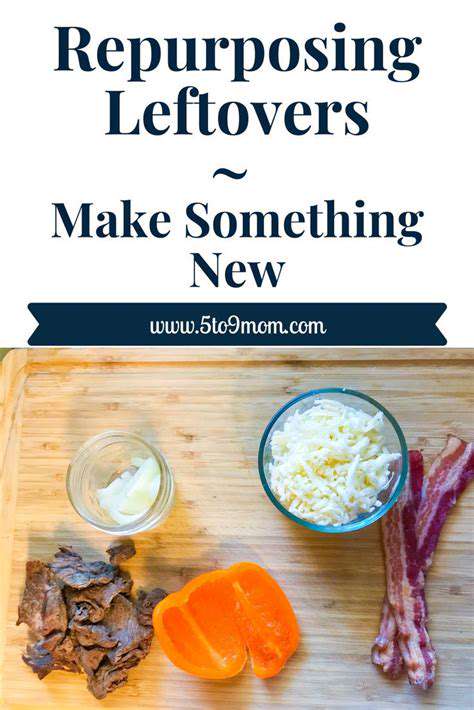
Leftovers: A Sustainable Solution
Leftovers, often viewed as a culinary afterthought, are a powerful tool for sustainable living. Properly stored and repurposed, they can significantly reduce food waste, saving you money and minimizing your environmental impact. By embracing leftovers, we're not just saving food; we're also reducing the amount of resources used in food production, from farming and transportation to processing and packaging.
Leftover meals offer a convenient and economical solution for lunch the next day. Transforming last night's dinner into a fresh and satisfying meal requires minimal effort and maximizes the value of ingredients you already have on hand. This simple act can significantly decrease the amount of food that ends up in the landfill.
Repurposing for Culinary Creativity
The possibilities for repurposing leftovers are endless. A simple roasted chicken can be transformed into flavorful chicken salad sandwiches, or incorporated into a hearty stew or soup. These creative transformations can significantly expand your culinary horizons and introduce you to new flavors and textures.
Transforming leftover vegetables into a flavorful stir-fry is another great option. Simply sauté the vegetables with your favorite protein and spices to create a delicious and healthy meal. Leftover pasta can be used as a base for a creamy carbonara or as a component in a hearty pasta salad.
Beyond the Plate: Innovative Ideas
Leftover rice can be used to make a delicious and nutritious risotto, or transformed into a flavorful fried rice. These resourceful transformations showcase how even the most seemingly mundane leftovers can be transformed into culinary masterpieces.
Leftover bread can be repurposed into breadcrumbs, croutons, or even french toast. The possibilities are endless, and with a little creativity, you can transform seemingly ordinary leftovers into exciting and delicious dishes.
Saving Money and Resources
Embracing leftovers and repurposing food is an effective way to save money. By reducing food waste, you're directly impacting your household budget and contributing to a more sustainable lifestyle. The cost of food production is substantial, and reducing waste directly translates to lower costs.
Repurposing leftovers is an environmentally friendly practice. By minimizing the amount of food that ends up in landfills, you're lessening the environmental burden of food production. This reduces greenhouse gas emissions and conserves natural resources.


